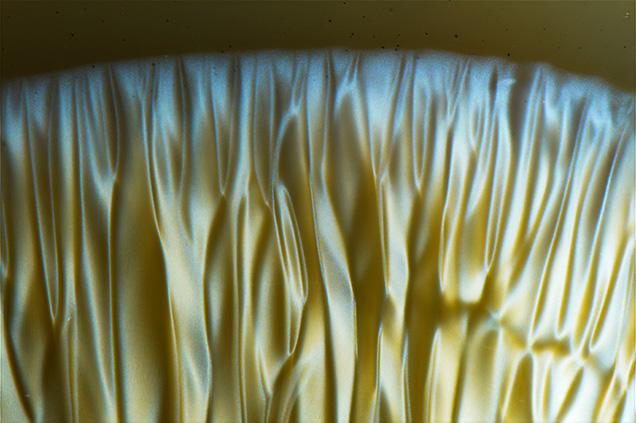Flashes and Flames in
Ethiopian Opal

The relatively new source for precious opal located in Ethiopia’s Wollo Province produces material with vibrant play-of-color and occasionally with interesting inclusions. A recently examined 2.68 ct cabochon contained a scattering of octahedral metal sulfide inclusions (relatively common in Ethiopian opal) along with an unusual combination of optical phenomena: play-of-color and chatoyancy. Face-up, the stone showed the typical flashes of colors one would expect in precious opal (figure 1, left). However, the back of this cabochon contained an interesting structure that produced a sheen-like chatoyancy over its slightly rounded surface (figure 1, right). This chatoyant zone was strikingly similar to the flame structure seen in some non-nacreous pearls, which is produced by an intricate structure of aragonite crystal laths (figure 2). In the case of this opal, the flame-like structure’s cause remains an enigma, though it could be due to the structural influence of a preexisting fibrous mineral replaced by opal. Unfortunately, Raman analysis was unable to detect any presence of another mineral phase in the chatoyant area, so the exact cause of chatoyancy is still unknown.

Chatoyancy is not unheard of in opal, though it is quite rare in precious material. Cat’s-eye common opal from Tanzania owes its optical effect to arrays of parallel needles, while the asterism and chatoyancy unique to the precious opal of Spencer, Idaho, are due to the arrangement of the same silica micro-spherules responsible for its play-of-color. At least one cat’s-eye precious opal was observed to even “wink” at the viewer when viewed with opposing lighting (Summer 2003 Lab Notes, p. 148). This Ethiopian opal cabochon joins the rarefied group of chatoyant precious opal with its unusual phenomenal display of flashes and flames.



